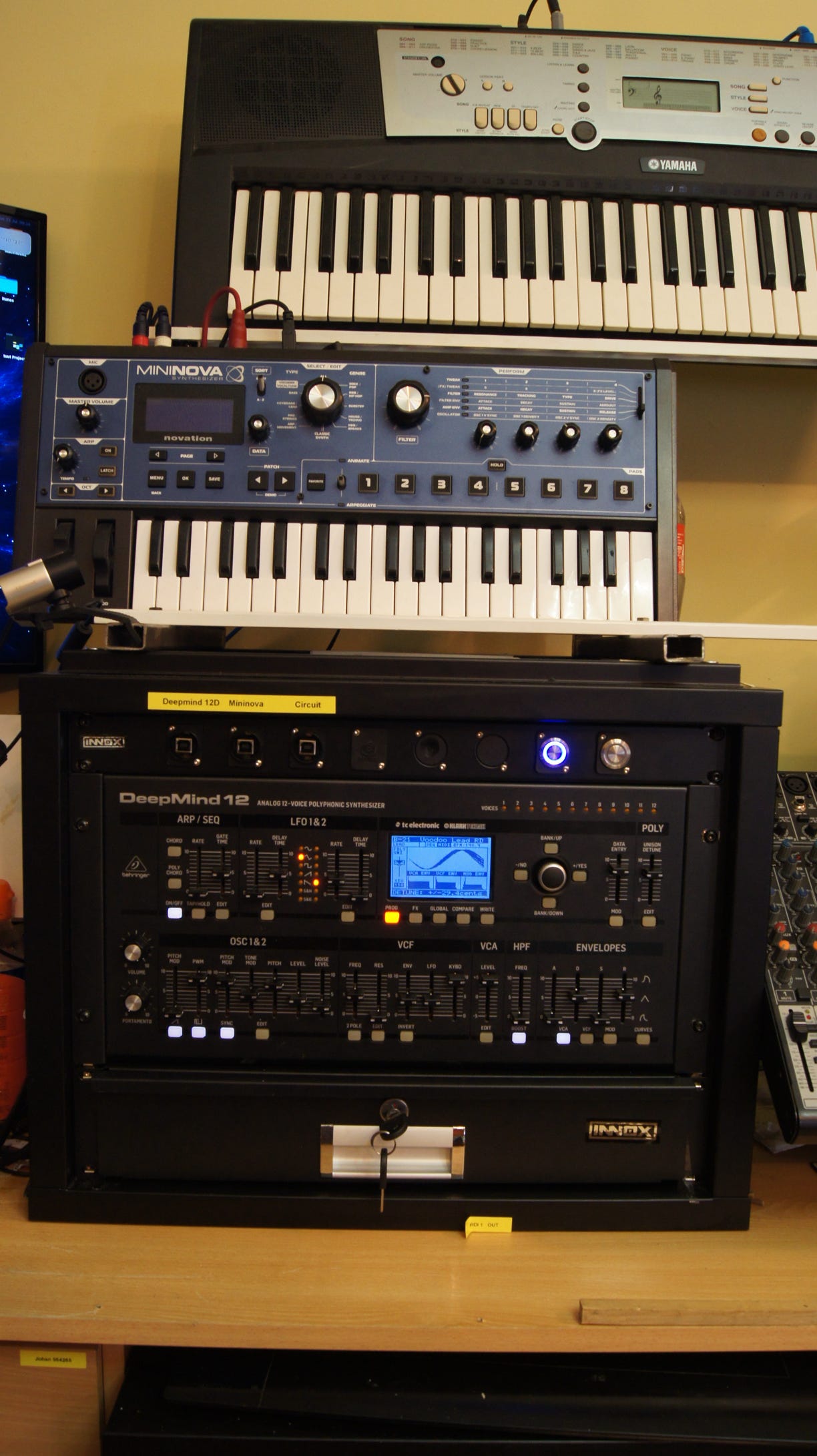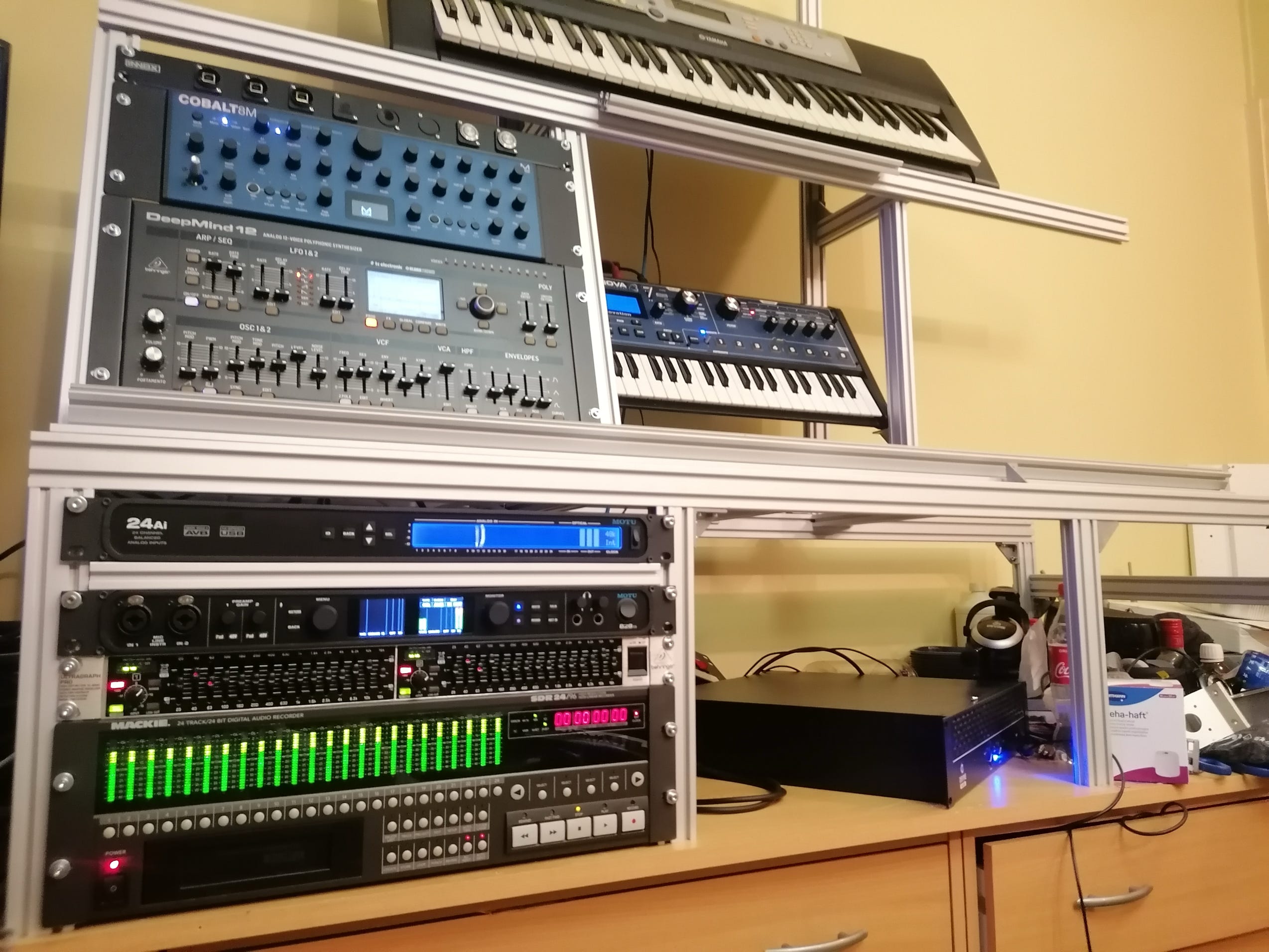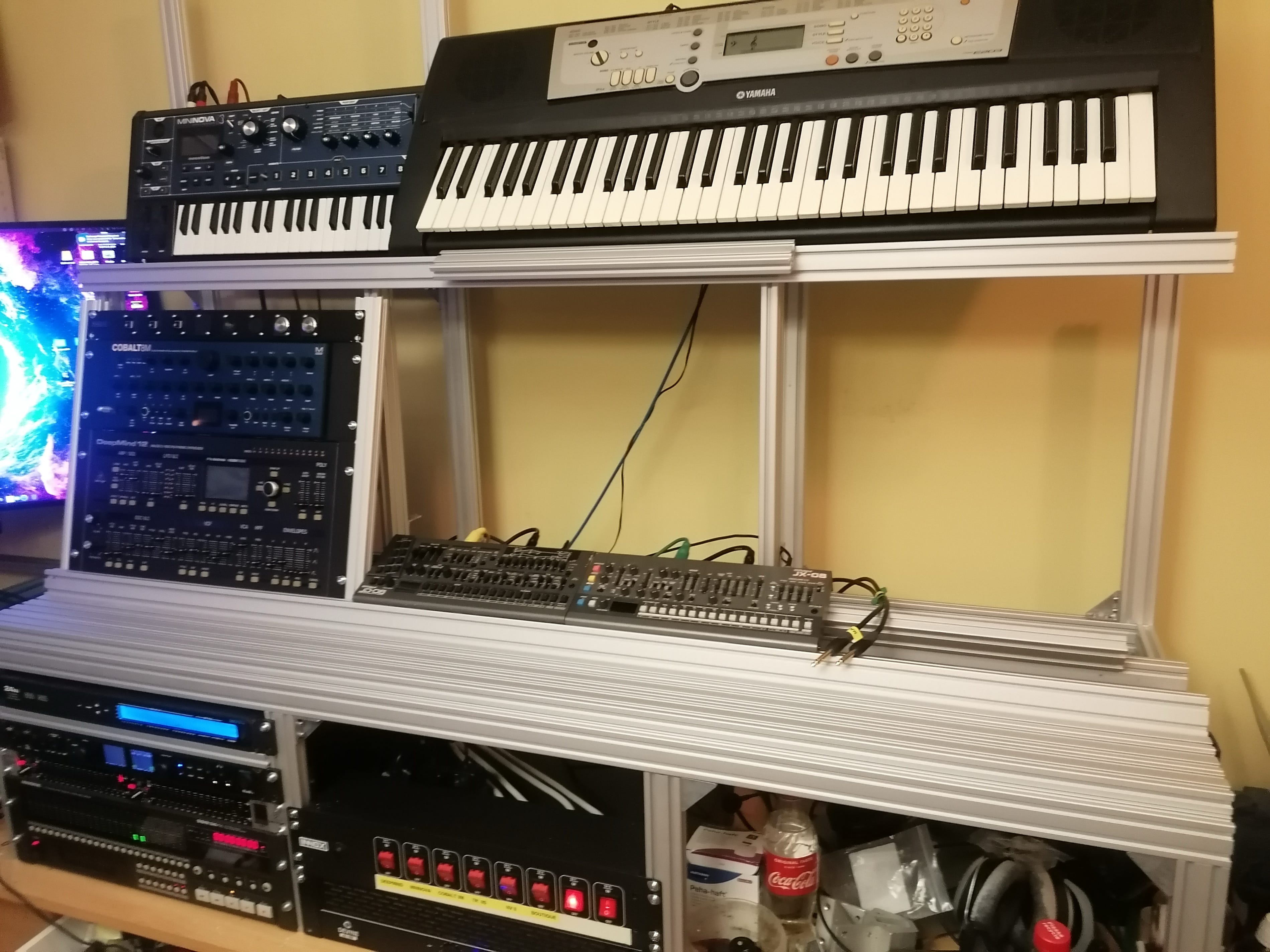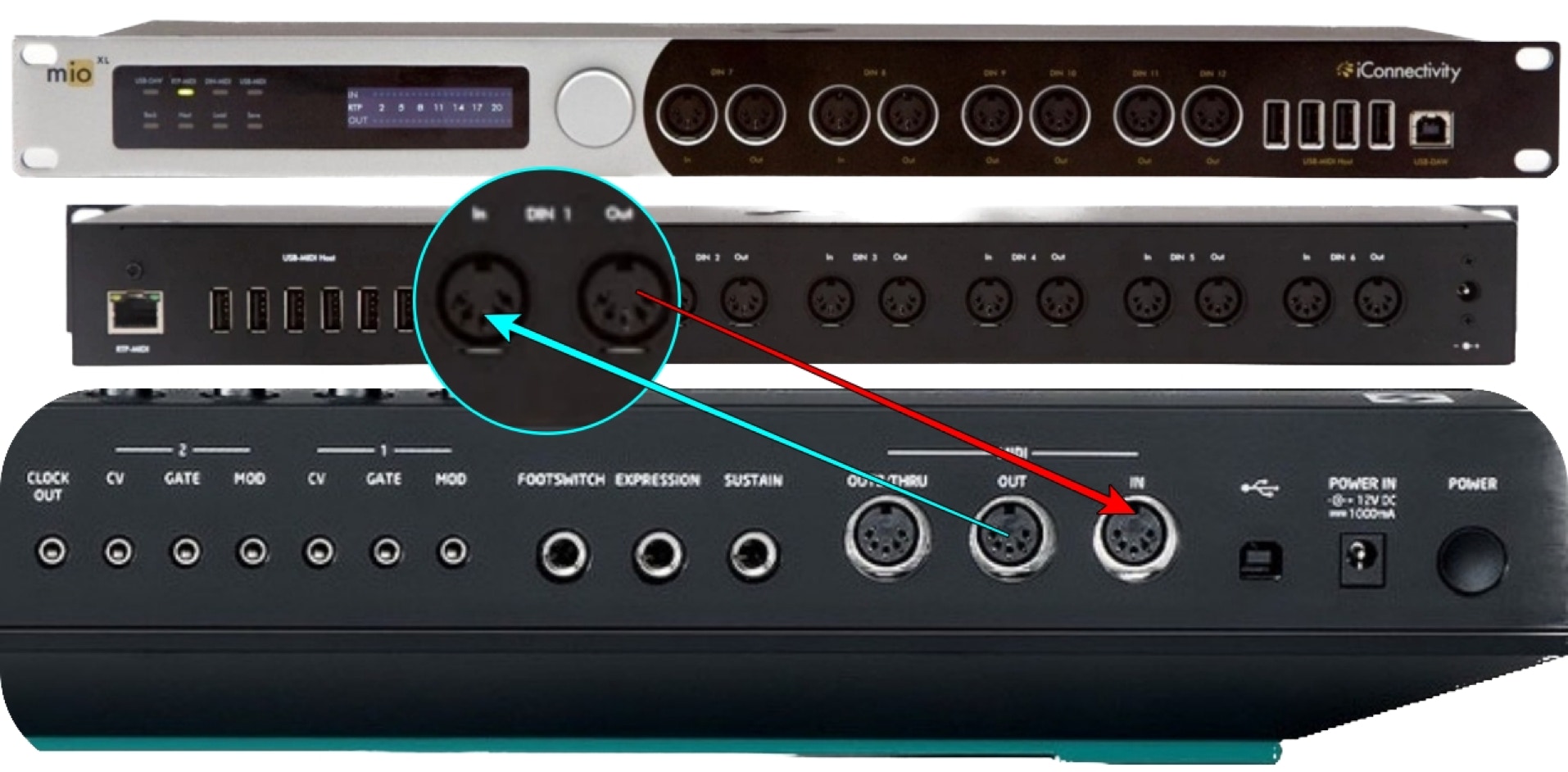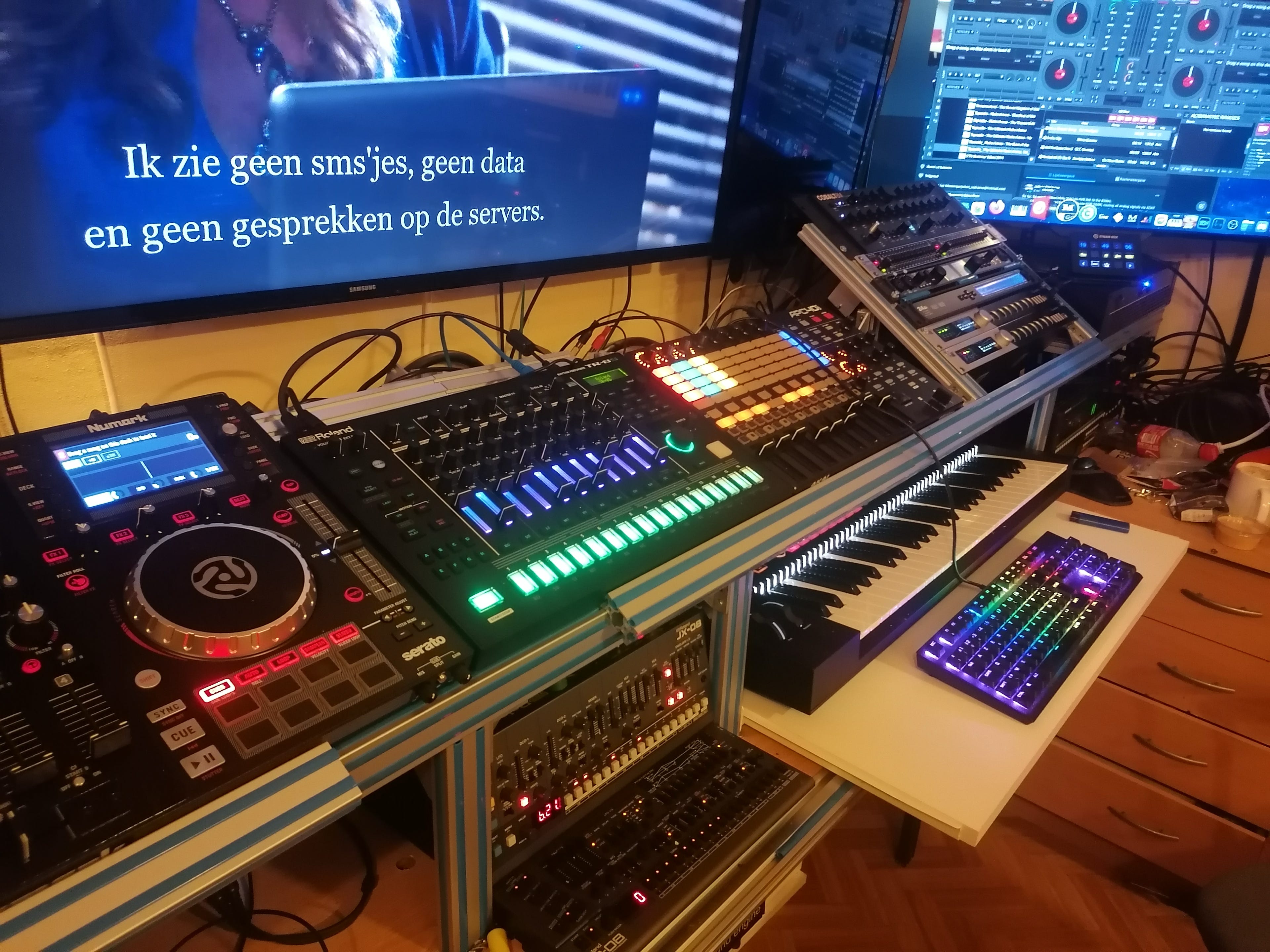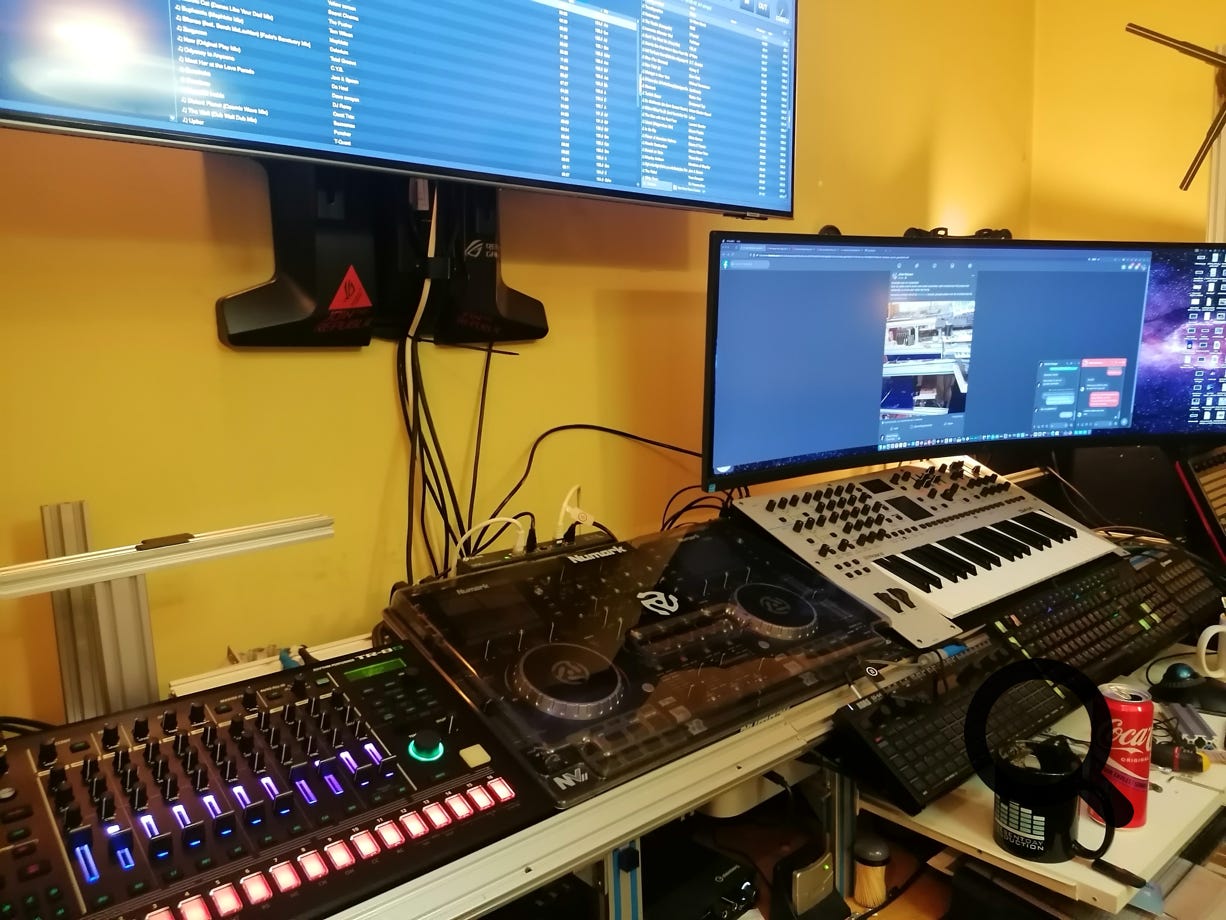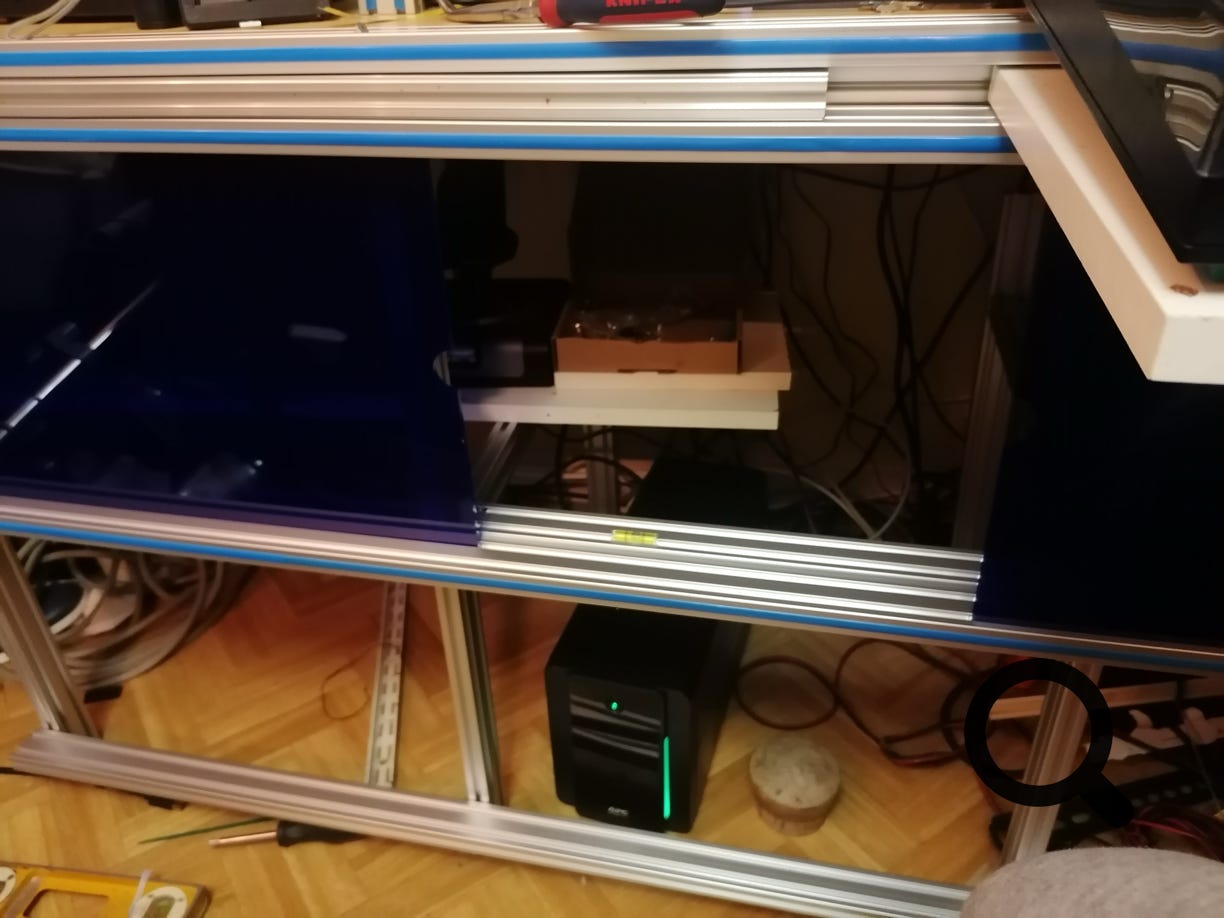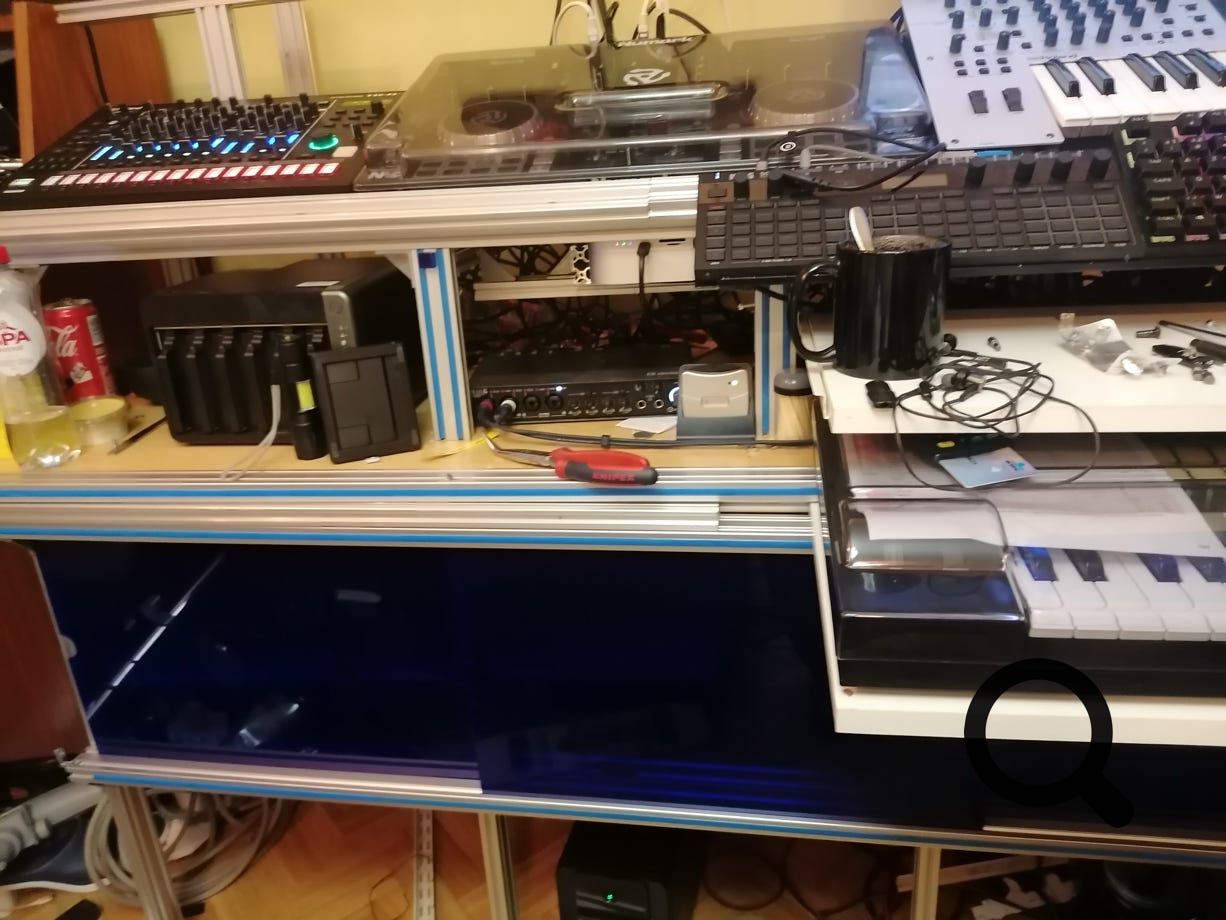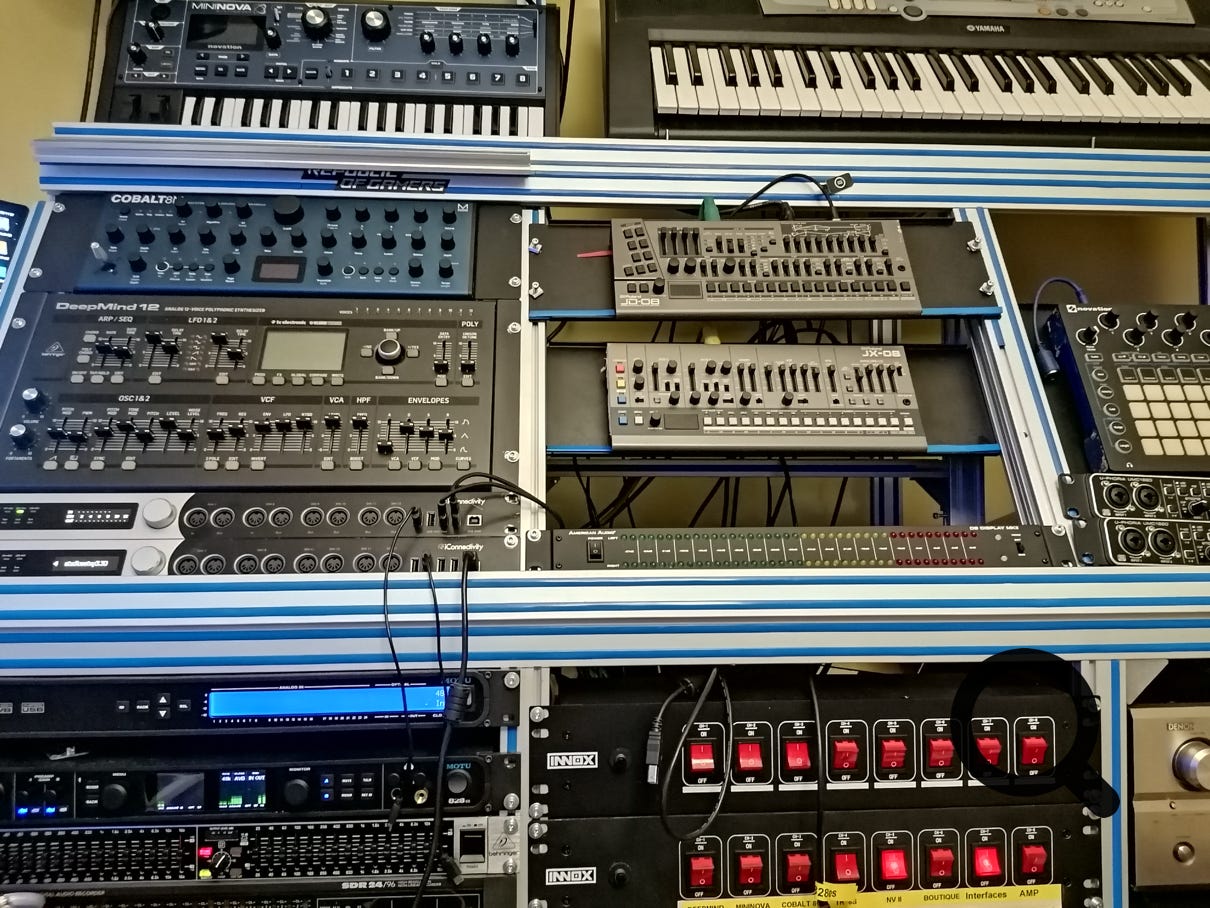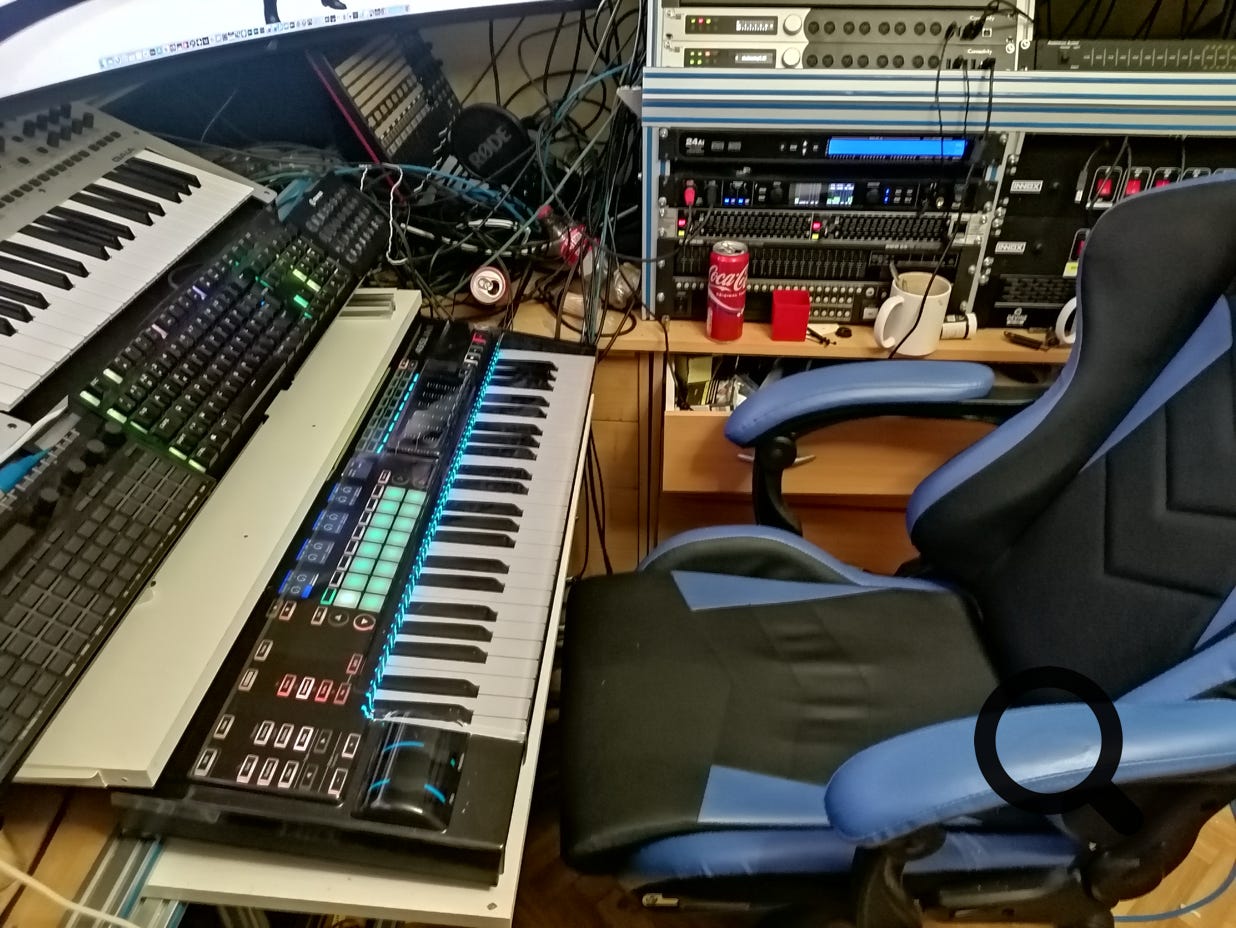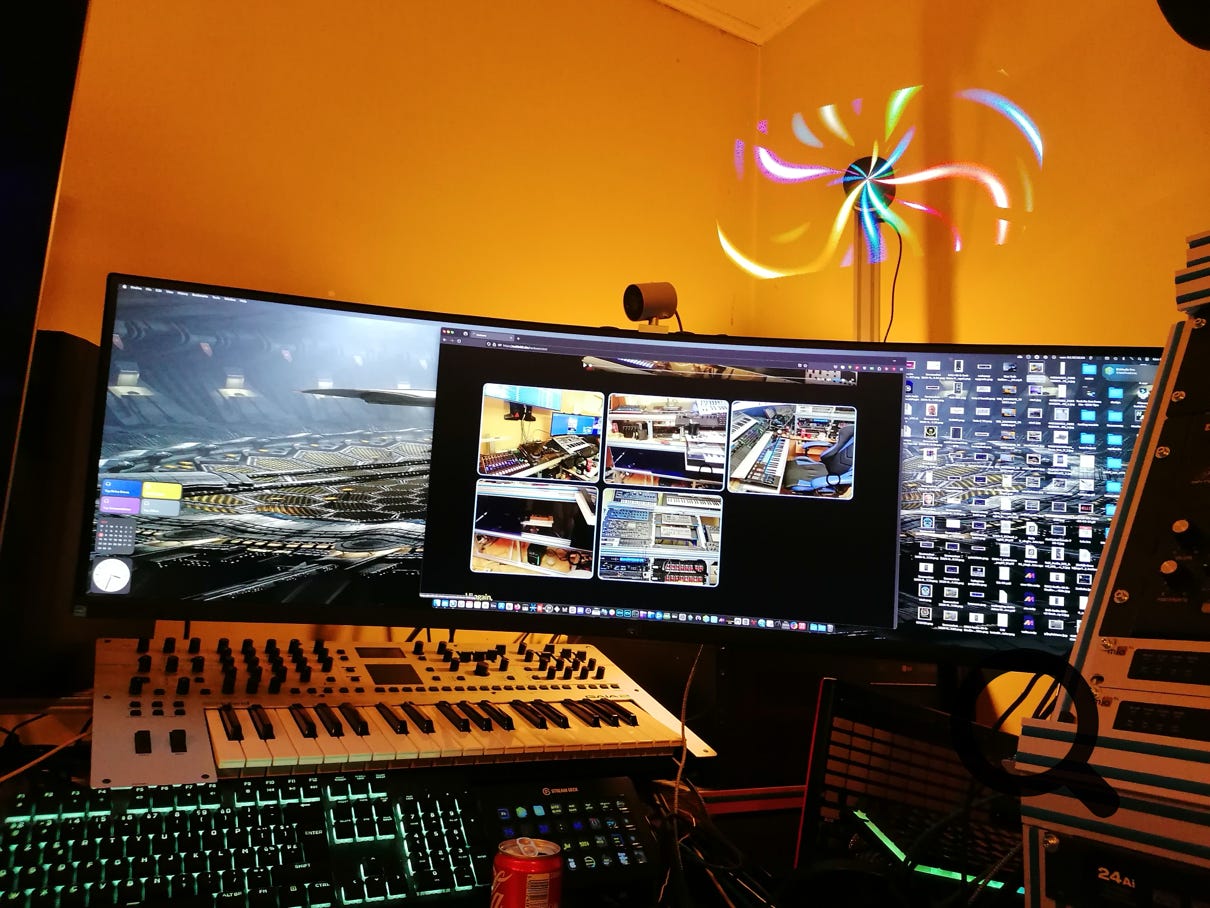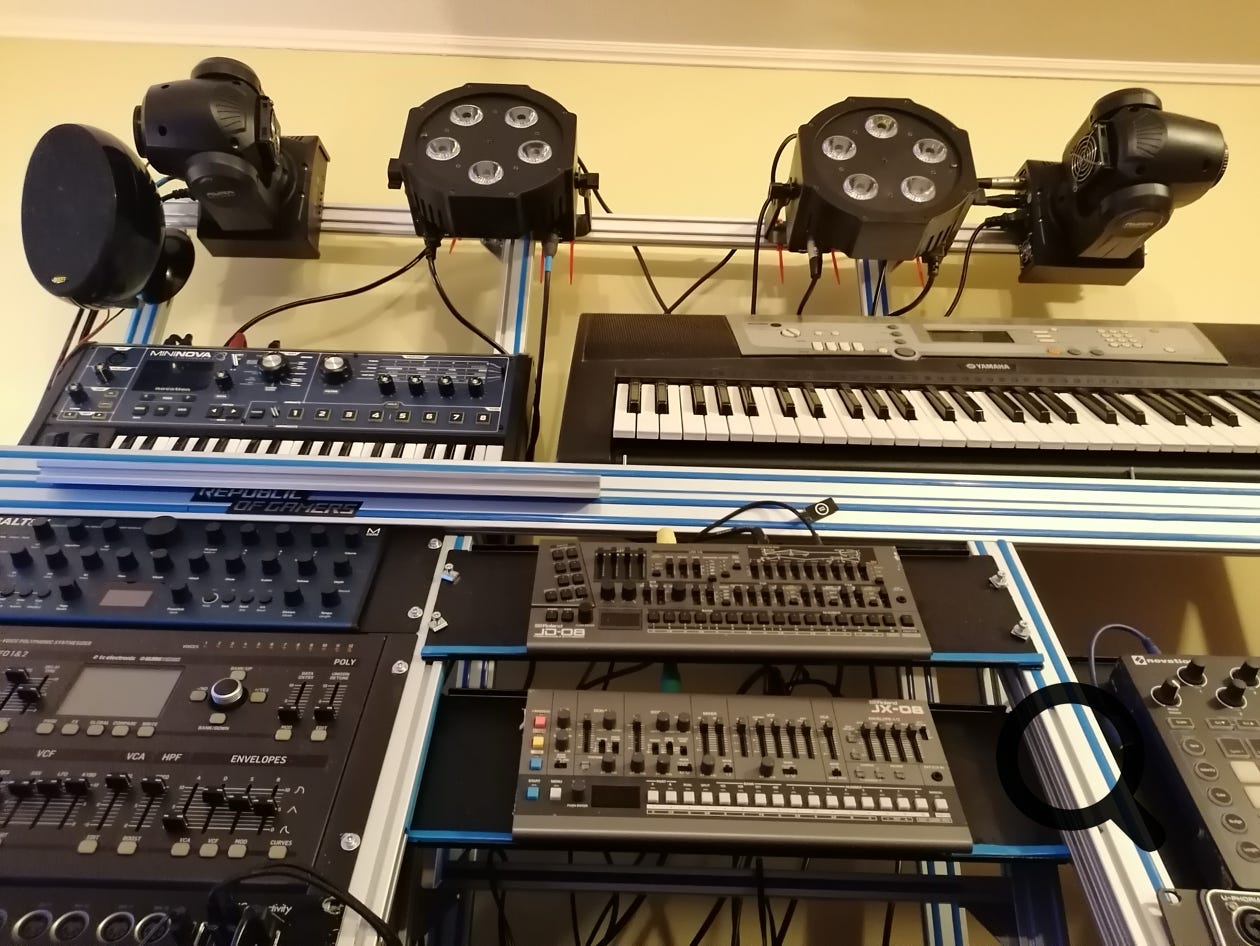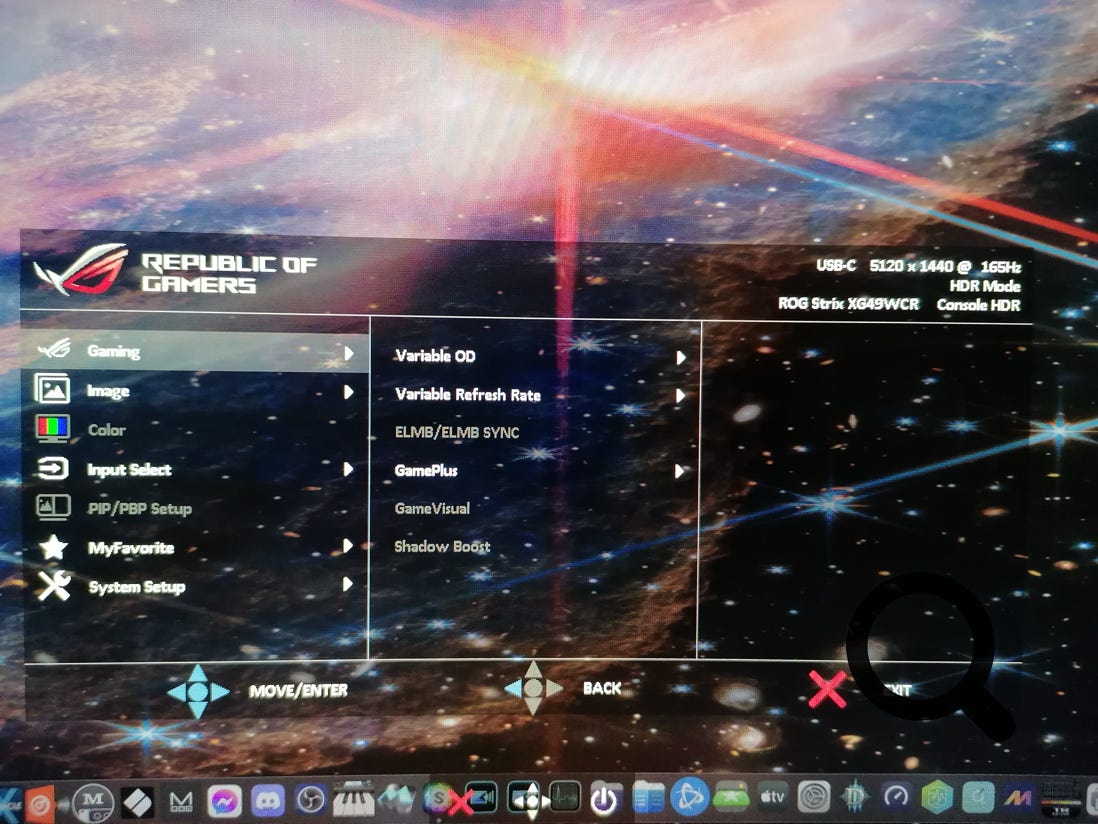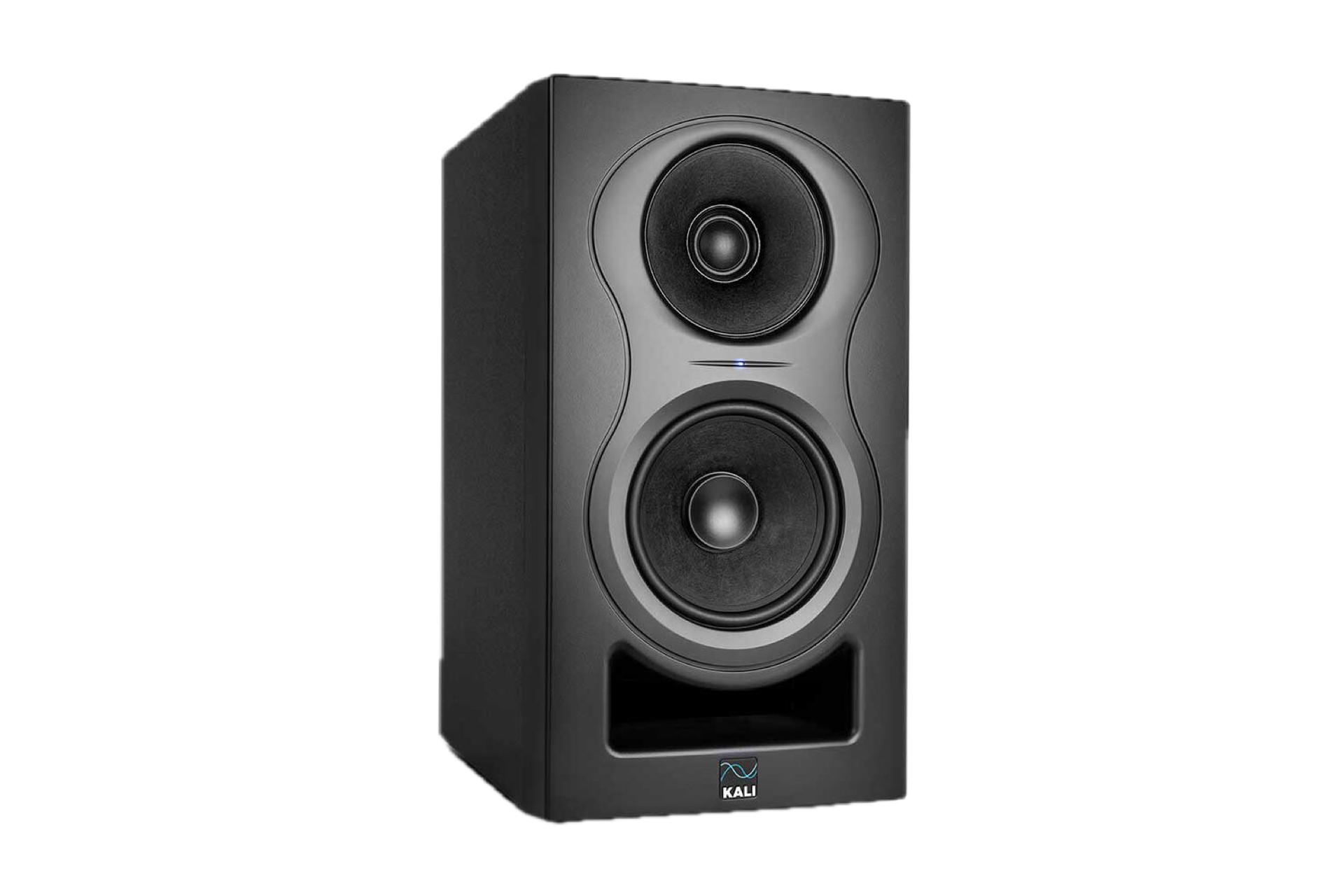
Hardware setups are not the most easiest as may seem. Many people just plug in the cables like out to in and in to out and expect everything to work in a snip. This is often untrue.
It is often true you create a midi-loop and as long you do not touch anything not much will happen.
The loop starts as soon as you touch a note or move a fader, turn a knob… Because you send a midi message over the closed circuit, the signal will not stop and repeats itself. It is like open up a mic gain to far and create a horrible sounding feedback loop.
Nothing is less true with a midi signal.
Unless you really need the feedback from a external device like parameters of a oscillator or filter I strongly recommend to not use the midi in of the SL MKIII for feeding back information from synthesisers FROM THE SAME CHAIN.
I do use the midi in but for one and only reason. My Roland TR-8S is serving as a clock master to my SL MKIII midi in for when I want to play music with my Numark NVII DJ console and want to synchronise the TR-8S or hardware synth ARPS. Why? On the SL MKIII the tempo can only be adjusted in full steps, like 120, 121, 122. Playing and mixing songs often ends up on tempo settings like 122,5 or 139,9. Even 1/10th of difference will get a synched pattern off synch in matter of seconds or minutes slightly build up over time but noticeable . The TR-8S CAN set it’s tempo per 1/10th of a second thus is a excellent way to synchronise DJ gear towards the rest of the chain.
When the TR-8S is not powered on, (or the rx is set to off on the SL) the SL MKIII is the master clock for all the rest of my devices.
